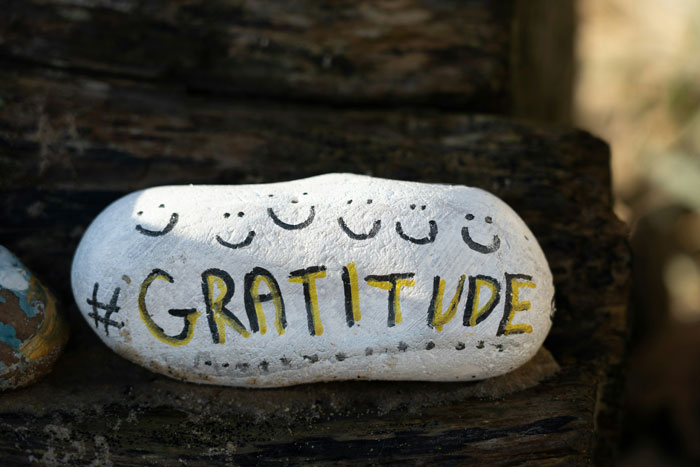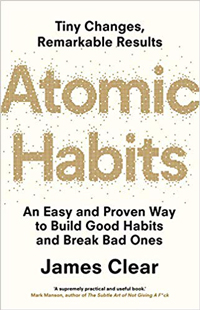The Art of Micro-Gratitudes: Finding Magic in the Mundane

Micro-gratitudes transform ordinary days through gratitude micro-moments. Discover instant gratitude techniques to find joy in daily life with brief practices.
Key Takeaways For Micro-Gratitudes
* Micro-gratitudes shift focus from waiting for big moments to appreciating the constant stream of small pleasures.
* This practice strengthens neural pathways for noticing positive experiences in real-time.
* Unlike traditional gratitude journaling, micro-gratitudes require no writing—just momentary attention.
* The practice builds resilience by creating multiple daily touchpoints of appreciation.
* Consistency matters more than intensity—brief acknowledgments throughout the day are more powerful than lengthy reflection sessions.
Introduction To Micro-Gratitudes
The steam rises from your morning coffee in delicate spirals, catching the first light streaming through your kitchen window.
Most of us hurry past this moment, minds already racing toward the day's demands.
But what if this fleeting scene holds the key to transforming your entire relationship with joy?
Traditional gratitude practices often center on major life events—promotions, relationships, health recoveries—leaving us waiting for significant reasons to feel appreciative.
Yet between these milestone moments lies an untapped goldmine of daily micro-appreciation opportunities that most of us overlook entirely.
Micro-gratitudes offer a revolutionary approach to well-being through present moment awareness, training your attention to notice and briefly acknowledge tiny, sensory experiences as they unfold.
Unlike conventional gratitude journaling, these mindful gratitude exercises require no pen, paper, or lengthy reflection sessions.
Instead, they weave mindfulness in everyday life through simple acknowledgment of fleeting pleasures: the satisfying click of a door closing, the softness of a favorite sweater, or the gentle weight of a pet settling beside you.
This practice transforms ordinary moments into sources of wonder, building resilience one micro-moment at a time while cultivating deeper appreciation for daily richness.
Micro-Gratitudes Sun Catcher Prisms
Understanding Micro-Gratitudes
What Makes Them Different
Unlike traditional gratitude practices that require dedicated time for reflection and writing, small gratitude practice operates in real-time throughout your day.
Where conventional gratitude journaling asks you to recall and analyze positive experiences hours later, micro-gratitudes capture appreciation in the immediate moment of occurrence.
This daily micro-appreciation approach focuses on immediate, sensory experiences rather than cognitive appreciation—feeling the warmth of sunshine on your skin rather than thinking about why you should be grateful for good weather.
The emphasis shifts from reflection to presence. Instead of evening journaling sessions, you're cultivating brief mindfulness practices that last mere seconds.
These mindful gratitude exercises don't require stopping your activities; they enhance them by adding layers of conscious appreciation to experiences you're already having.
The Science of Small Moments
Neuroscience research reveals that brief positive experiences accumulate neurologically in powerful ways.
Gina Biegel's work on "taking in the good" demonstrates how even fleeting moments of appreciation can strengthen neural pathways associated with well-being when we pause to savor them for just 10-20 seconds.
Studies on attention training exercises show that consistent practice of noticing small pleasures literally rewires the brain's default attention patterns.
The compound effect of these micro-practices creates measurable changes in mood, stress resilience, and overall life satisfaction through accumulated positive neuroplasticity.
The Neuroscience Behind the Practice of
Micro-Gratitudes
Training Your Attention
The human brain processes fleeting positive stimuli through a fascinating interplay of neural networks that can be strengthened through intentional practice.
When we experience a micro-moment of pleasure—like the scent of fresh coffee or the feeling of soft fabric—our brain's reward circuits activate briefly before moving on to the next stimulus.
However, when we pause to consciously acknowledge these experiences, we extend their neurological impact exponentially.
Micro-gratitudes work by training what neuroscientists call "positive attention bias"—the brain's tendency to notice and prioritize beneficial stimuli over neutral or negative ones.
This small gratitude practice literally rewires our default attention patterns through repeated activation of appreciation pathways.
Research shows that even 10-20 seconds of conscious acknowledgment can strengthen these neural connections significantly.
The role of mindfulness in amplifying small pleasures cannot be overstated.
When we bring present moment awarenessto ordinary experiences, we activate the brain's prefrontal cortex, which enhances our ability to savor and remember positive moments.
This process creates what psychologists call "positive neuroplasticity"—the brain's ability to form and strengthen neural pathways associated with well-being.
Daily appreciation habits fundamentally alter the brain's reticular activating system, the filtering mechanism that determines what information reaches conscious awareness.
Through consistent practice of noticing small pleasures, we program our brains to become increasingly sensitive to positive environmental cues, creating an upward spiral of appreciation and joy.
Breaking the Hedonic Treadmill
We adapt to major positive events quickly because our brains are evolutionarily designed to return to baseline emotional states—a survival mechanism that prevents complacency.
However, gratitude micro-moments maintain freshness and novelty by targeting constantly changing micro-experiences.
Unlike single large events, the infinite variety inherent in small, sensory moments prevents hedonic adaptation.
This approach leverages the power of variety in small experiences, ensuring that each micro-gratitude encounter offers something unique, keeping our appreciation circuits active and engaged throughout the day.

Practical Implementation
Getting Started: Your First Week
Beginning your micro-gratitudes journey requires gentle intention-setting rather than rigid goals.
Start by choosing just three moments during your day—perhaps morning coffee, lunch break, and evening wind-down—to practice brief mindfulness practices.
These anchor points help establish the habit without overwhelming your schedule or creating performance pressure.
Identifying personal sensory preferences is crucial for sustainable practice.
Some people naturally gravitate toward visual pleasures like sunlight patterns on walls, while others prefer tactile experiences like the weight of a warm mug or the softness of a pet's fur.
Spend your first week simply observing which sensory experiences naturally draw your attention and bring you micro-moments of joy.
Common beginner experiences include forgetting to practice, feeling self-conscious about "appreciating small things," or wondering if you're "doing it right."
These responses are completely normal. Remember that instant gratitude techniques don't require perfection—they simply invite presence.
Building Your Micro-Gratitude Vocabulary
Developing your appreciation vocabulary across sensory categories enriches the practice immeasurably.
Visual micro-gratitudes might include shadows dancing on surfaces, steam rising from hot beverages, or the way light filters through leaves.
Auditory appreciation can focus on distant laughter, birds singing, or the satisfying click of a closing door.
Emotional micro-moments deserve equal attention—that brief feeling of accomplishment when organizing your desk, the warmth of connection during a genuine smile exchange, or the peaceful sensation of taking your first deep breath after a busy day.
These mindful gratitude exercises train your emotional awareness alongside sensory appreciation.
Environmental appreciation encompasses weather changes, lighting shifts throughout the day, and the unique character of different spaces.
Each environment offers distinct micro-gratitude opportunities waiting to be discovered.
Integration Strategies
Daily micro-appreciation works best when anchored to existing habits.
Link micro-gratitudes to routine activities like brushing teeth, checking emails, or walking through doorways. These natural transition points become perfect opportunities for brief appreciation pauses.
The "gratitude pause" technique involves taking one conscious breath while acknowledging whatever pleasant sensation is available in that moment.
Technology can support rather than hinder this practice—set gentle phone reminders as gratitude cues rather than demanding notifications.
Overcoming Common Obstacles
Forgetfulness and inconsistency plague most new practitioners.
Combat this by lowering expectations and celebrating any micro-gratitude moments that occur naturally.
Noticing small pleasures becomes easier with practice, not pressure.
Managing perfectionism involves remembering that missed opportunities aren't failures—they're simply chances to begin again with the next available moment.
During difficult periods, micro-gratitudes become even more valuable as anchors to present-moment stability and resilience.
Real-World Examples and Applications

Home and Personal Spaces
Your home environment offers countless opportunities for micro-gratitudes throughout daily routines.
Morning rituals become rich with appreciation potential—the warmth of water cascading over your hands while washing your face, the satisfying sound of coffee percolating, or the way early sunlight streams across your kitchen counter.
These daily appreciation habits transform mundane activities into moments of conscious presence.
Evening wind-down periods provide equally powerful opportunities for gratitude micro-moments.
Notice the relief of removing shoes after a long day, the comfort of sinking into your favorite chair, or the gentle weight of a blanket settling around your shoulders.
Seasonal changes in living spaces offer fresh micro-gratitude discoveries—the first flowers blooming on your windowsill, autumn light filtering differently through curtains, or the cozy feeling of lamplight during shorter winter days.
Work and Commuting
Even challenging work environments contain hidden treasures for brief mindfulness practices.
The smooth operation of an elevator, the satisfying click of a pen, or the momentary quiet when a busy office settles can become anchors of appreciation.
Mindful gratitude exercises during busy workdays might include appreciating the ergonomics of your chair, the convenience of technology working seamlessly, or the brief pleasure of a perfectly temperature-controlled room.
Commute time transforms into gratitude practice through present moment awareness—the rhythm of train wheels on tracks, interesting architectural details glimpsed from bus windows, or the simple miracle of transportation systems functioning reliably.
Relationships and Social Interactions
Micro-gratitudes flourish in human connections through appreciating genuine smiles, the sound of loved ones' laughter, or the comfort of familiar voices.
Notice micro-moments like someone holding a door open, a colleague's helpful gesture, or the warmth in a friend's greeting.
These small gratitude practice moments build empathy by training attention toward others' positive actions and expressions, creating ripple effects of appreciation that strengthen social bonds and emotional intelligence naturally.
Long-Term Benefits and Lifestyle Integration
The Compound Effect
Weeks and months of consistent micro-gratitudes practice create profound neurological changes that extend far beyond momentary appreciation.
Research demonstrates that daily micro-appreciation literally rewires the brain's default attention patterns, leading to measurably improved baseline mood and enhanced stress resilience.
Practitioners report increased emotional stability, with difficult situations feeling more manageable when viewed through a lens trained to notice available pleasures and positives.
Enhanced creativity and problem-solving emerge naturally through positive attention training.
When your brain becomes skilled at noticing small pleasures, this heightened sensitivity transfers to recognizing subtle opportunities, creative solutions, and innovative approaches in professional and personal challenges.
Creating a Micro-Gratitude Culture
Mindful gratitude exercises become powerfully contagious when shared with family and friends.
Teaching children to notice small wonders—the intricate patterns in tree bark, the satisfying crunch of autumn leaves, or the way soap bubbles catch light—builds lifelong attention training exercises that serve their emotional development profoundly.
Building communities of micro-appreciation creates positive feedback loops where shared observations amplify individual practice, making gratitude a collective rather than solitary experience.

Conclusion: Micro-Gratitudes
The extraordinary truth about daily micro-appreciation is that it requires no special equipment, training, or circumstances—only the willingness to pause and notice what's already present.
Magic doesn't hide in distant destinations or future achievements; it dwells in the steam rising from your tea, the satisfying weight of a well-made book in your hands, or the gentle rhythm of your own breathing.
Your next micro-moment awaits right now.
Perhaps it's the texture of the surface beneath your fingertips, the quality of light in your current space, or the simple fact that your heart beats steadily without conscious effort.
These present moment awareness experiences are democracy's greatest gift—available to everyone, everywhere, regardless of circumstances or resources.
The path to transformation begins with a single conscious breath, a momentary pause, and the radical act of appreciating what is.
Start practicing micro-gratitudes.
More Books For Spiritual Growth
Filed Under: Micro-Gratitudes
Helpful Recommendations
Amazon Audible
Will Help You Revitalize

The Most IMPORTANT Book On Women's Brain Health

A Powerful Book
For Quality Relationships



21 Day Primal
Blueprint
Body Transformation

Deliver Me From Negative Self Talk

Best Course To Make Money On YouTube!

Treasured Lands:
A Photographic Odessey
Through America's
National Parks

Learn More About
Kindle Unlimited




